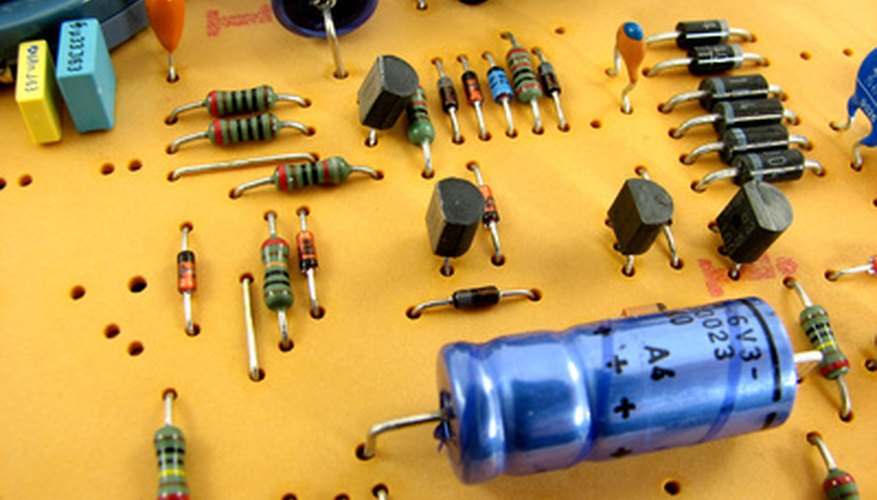A printed circuit board consists of a variety of electronics parts soldered to a thin copper-plated plastic board. The copper foil, etched into lines called traces, forms the circuit's wiring. You can remove a component, such as a diode, from the circuit board if you need to replace the part or to salvage parts from the board. The main task in removing the diode is heating the solder joints and removing the solder holding the part to the board. Diodes have two leads or connecting points, so you must remove solder from two locations to free the part.
- A printed circuit board consists of a variety of electronics parts soldered to a thin copper-plated plastic board.
- Diodes have two leads or connecting points, so you must remove solder from two locations to free the part.
Turn the power to the circuit board off. Turn the soldering iron on and give it a few minutes to warm up.
Locate the diode you want to remove.
Cock the desoldering pump by pressing the plunger in, loading the tool's spring.
- Locate the diode you want to remove.
- Cock the desoldering pump by pressing the plunger in, loading the tool's spring.
Touch the tip of the hot soldering iron to one of the diode's solder pads. Let it dwell on the pad only long enough to melt the solder. Hold the tip of the desoldering pump close to the pad and release the trigger, drawing solder into the pump.
Desolder the diode's second solder pad in the same manner as the first.
Grasp one of the diode's leads with the long-nose pliers and wiggle slightly to free it from the board. Repeat for the remaining lead until it breaks free of the board. Maintaining your grip on the pliers, carry the diode from the board and gently drop it onto your work area.
TIP
A schematic of the circuit will likely have the diodes numbered with a "D" and a numeral, such as "D1" and "D2." The board will also likely have corresponding part numbers silk-screened on the component side. Match the diode number on the schematic with the number on the board to locate the part. The diode has two solder pads. For a surface-mount part, the solder pads will be on the same side of the board as the diode. For a through-hole, leaded diode, the solder pads will be on the opposite side. The solder pad should be relatively clean of solder. If the pad has some leftover solder, wait 2 minutes to let the pad cool and try again. Re-cock the desoldering tool each time you use it.
WARNING
Do not hold the tip of the soldering iron down for more than about 10 seconds.
